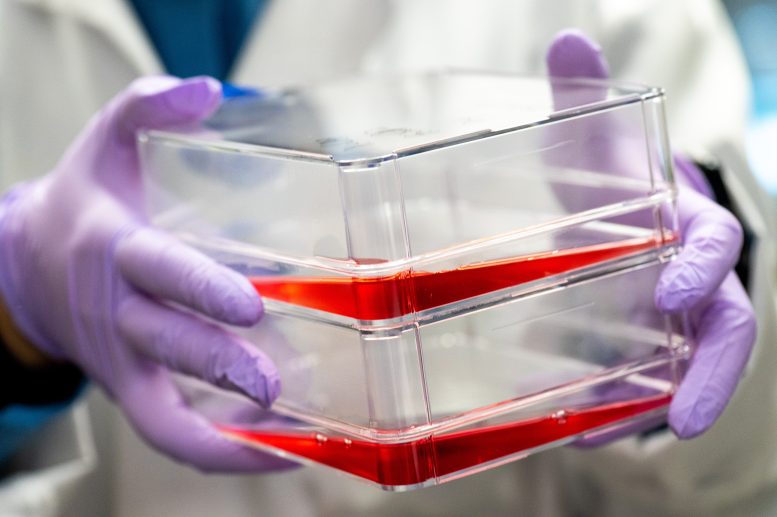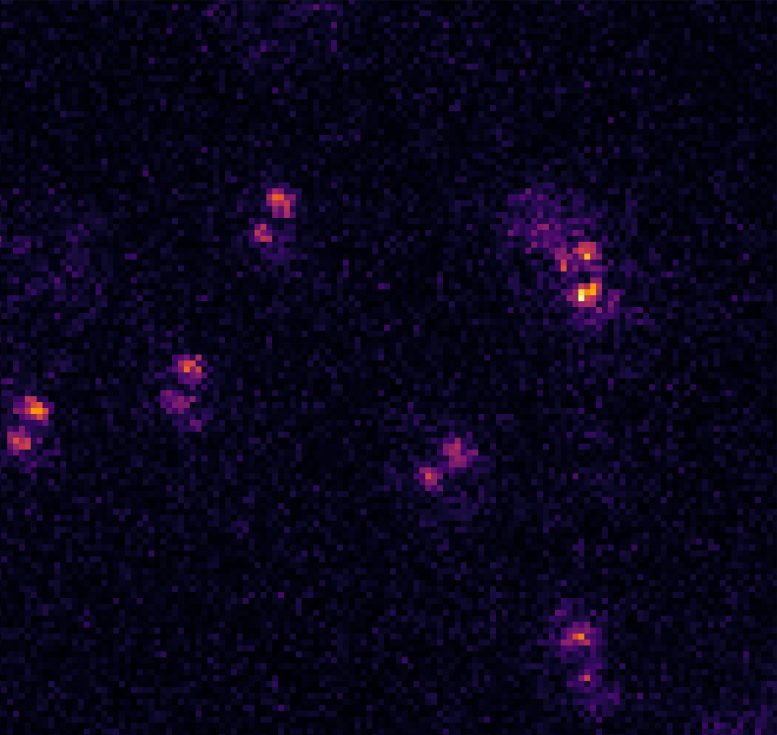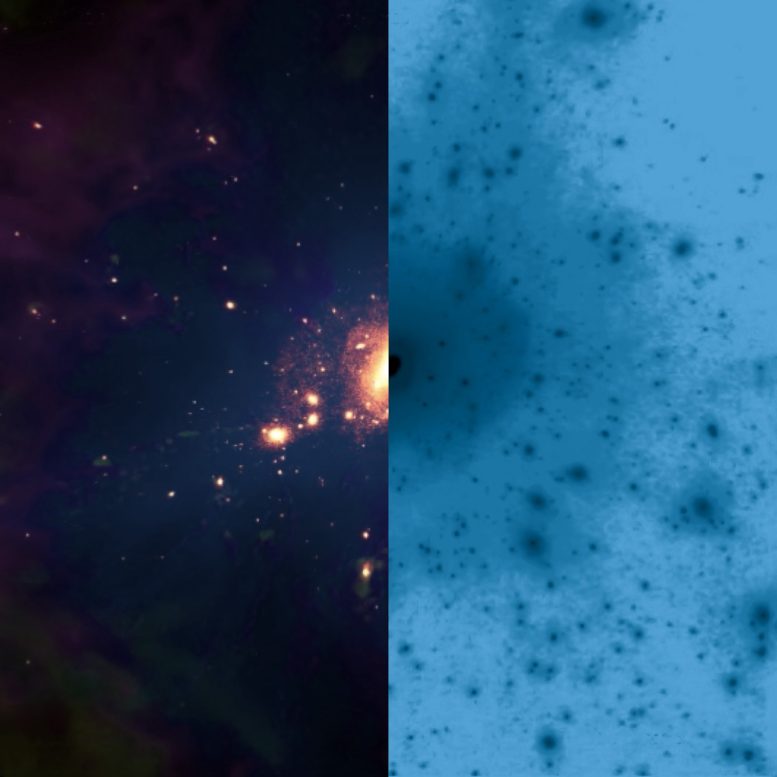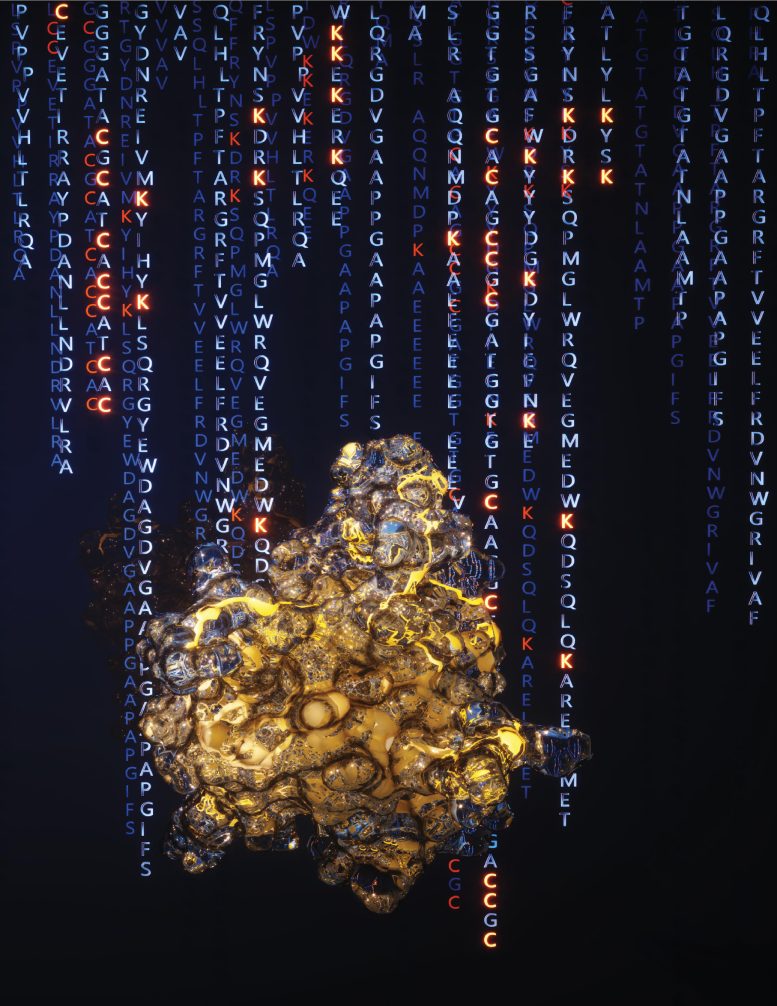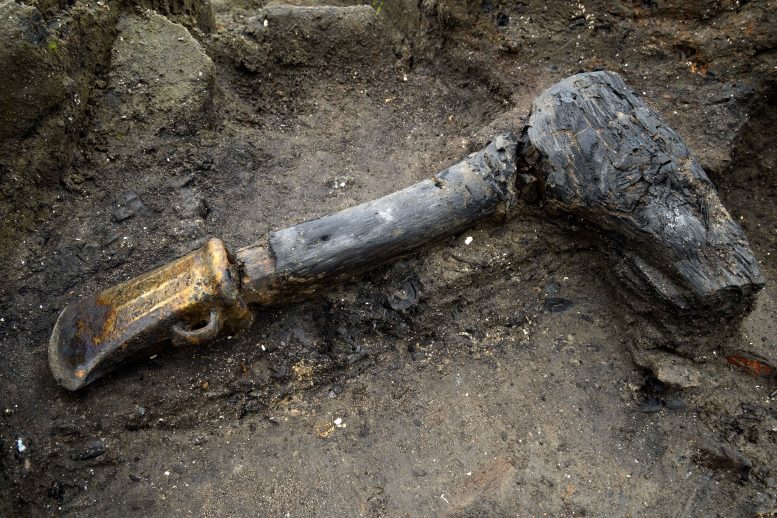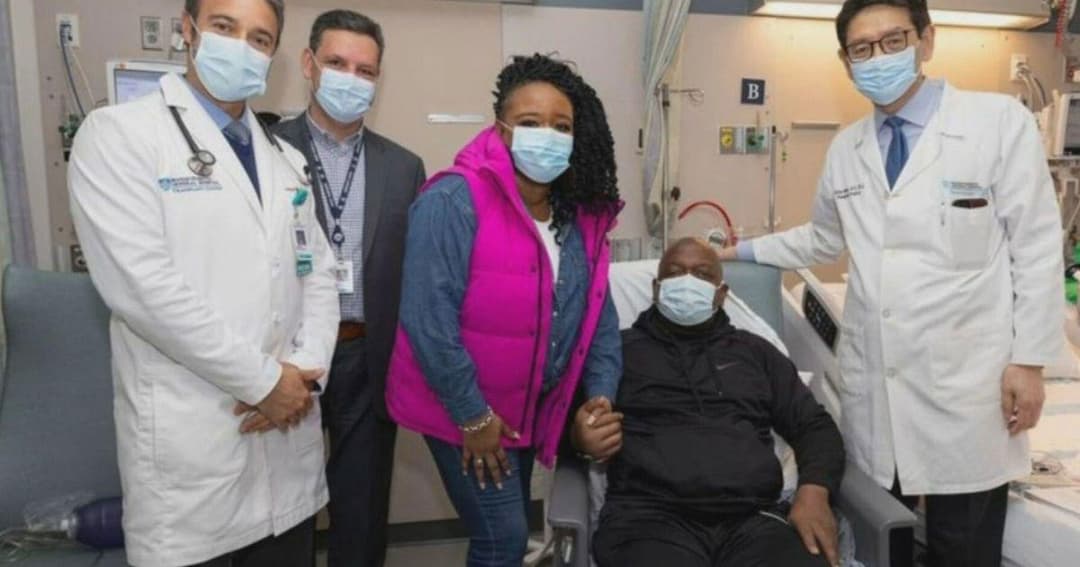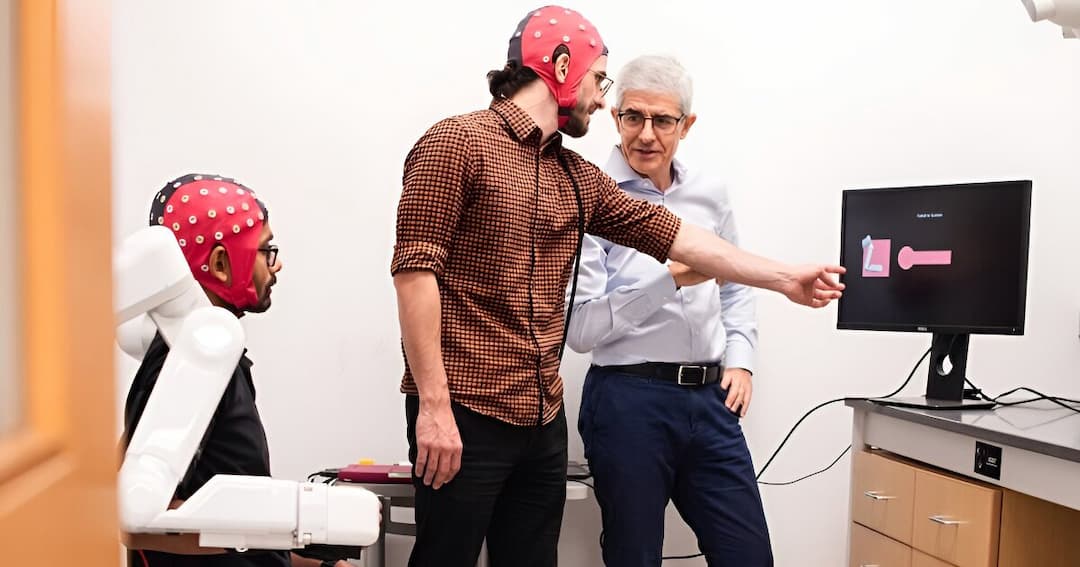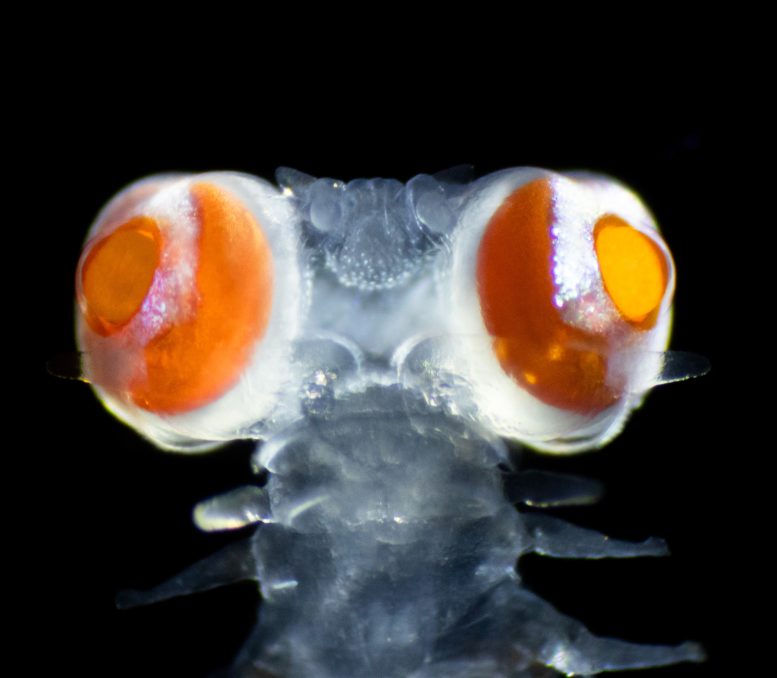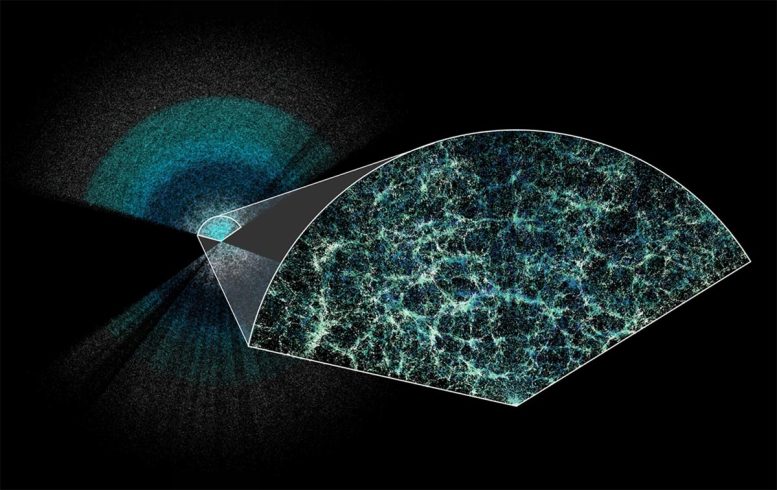This star won't get anemia ... a diet rich in iron ...
Stars may devour planets ... but black holes devour stars ...Cannibal Star Discovered With Metal Scar – “Nothing Like This Has Been Seen Before
... the magnetic white dwarf WD 0816-310, where astronomers have found a scar imprinted on its surface as a result of having ingested planetary debris. When objects like planets or asteroids approach the white dwarf they get disrupted, forming a debris disc around the dead star. Some of this material can be devoured by the dwarf, leaving traces of certain chemical elements on its surface. Using ESO’s Very Large Telescope, astronomers found that the signature of these chemical elements ... indicates that the magnetic fields funneled these elements onto the star, concentrating them at the magnetic poles and forming the scar seen here.
https://scitechdaily.com/cannibal-st...n-seen-before/
Our star gets heartburn ...Astronomers find what may be the universe’s brightest object with a black hole devouring a sun a day
The quasar swirls like a cosmic hurricane and is described by Australian researcher Christian Wolf as "the most violent place that we know in the universe." ... The record-breaking quasar shines 500 trillion times brighter than our sun. The black hole powering this distant quasar is more than 17 billion times more immense than our sun ... These later observations and computer modeling have determined that the quasar is gobbling up the equivalent of 370 suns a year — roughly one a day. ... More observations are needed to understand its growth rate.
... “The incredible rate of growth also means a huge release of light and heat,” said lead study author Christian Wolf, associate professor in the Australian National University’s College of Science, in a statement. “So, this is also the most luminous known object in the universe. It’s 500 trillion times brighter than our sun.” ...
The quasar is 12 billion light-years away and has been around since the early days of the universe. A light-year is 5.8 trillion miles
https://www.nbcnews.com/science/spac...ect-rcna139507
https://us.cnn.com/2024/02/21/world/...scn/index.html
Precocious galaxies ...Sun Emits Monumental X6.3 Flare, the Strongest in 6 Years
On February 22, 2024, the Sun emitted an extremely strong solar flare. ... This particular solar flare has been classified as an X6.3 flare. The “X-class” designation is reserved for the most intense solar flares, with the numerical value offering further detail on its strength. An X6.3 flare represents an extraordinarily potent event. It stands out as the most significant flare observed since an X8.2 flare was recorded on September 10, 2017. ... An X-class flare, such as the X6.3, signifies an extremely powerful solar event, capable of causing significant disturbances in Earth’s atmosphere, affecting communications, navigation systems, and even power grids. The numerical value following the class letter provides a more precise indication of the flare’s intensity, with higher numbers representing stronger flares. ...
BELOW: NASA’s Solar Dynamics Observatory captured this image of the solar flare – as seen in the bright flash in the upper left of the Sun
https://scitechdaily.com/fury-unleas...st-in-6-years/
This puts stars AND galaxies to shame ...“Beyond What’s Possible” – Webb Space Telescope Discovers Mysterious Ancient Galaxies
Our understanding of how galaxies form and the nature of dark matter could be completely upended, after new observations of a stellar population bigger than the Milky Way from more than 11 billion years ago that should not exist.
A paper published in Nature details findings using new data from the James Webb Space Telescope (JWST). The results find that a massive galaxy in the early universe – observed 11.5 billion years ago (a cosmic redshift of 3.2) – has an extremely old population of stars formed much earlier – 1.5 billion years earlier in time (a redshift of around 11). The observation upends current modeling, as not enough dark matter has built up in sufficient concentrations to seed their formation. ...
“Galaxy formation is in large part dictated by how dark matter concentrates,” she says. “Having these extremely massive galaxies so early in the Universe is posing significant challenges to our standard model of cosmology. This is because we don’t think such massive dark matter structures as to host these massive galaxies have had time yet to form. More observations are needed to understand how common these galaxies may be and to help us understand how truly massive these galaxies are.”
BELOW JWST-7329: a rare massive galaxy that formed very early in the Universe. This James Webb Space Telescope NIRCAM image shows a red disk galaxy but with images alone, it is hard to distinguish from other objects. Spectral analysis of its light with JWST revealed its anomalous nature – it formed around 13 billion years ago even though it contains ~4x more mass in stars than our Milky Way does today.
https://scitechdaily.com/beyond-what...ient-galaxies/
A passing influence ...Astronomers Discover Deep-Space "Structure," 1.4 Billion Light Years Across: That's roughly 8,400,000,000,000,000,000,000 miles.
The "South Pole Wall" is a flabbergasting 1.4 billion light years across and contains hundreds of thousands of galaxies ... To put the size of the South Pole Wall into perspective, our own Milky Way galaxy is a mere 52,850 light years across. ... The South Pole Wall rivals in size the Sloan Great Wall, the sixth largest cosmic structure discovered. ... Astronomers have long noticed that galaxies are not scattered randomly throughout the universe but rather clump together in what's known as the cosmic web, enormous strands of hydrogen gas in which galaxies are strung like pearls on a necklace that surround gigantic and largely empty voids. ... In 2014, Pomarede and his colleagues unveiled the Laniakea supercluster, a galactic collection in which our own Milky Way resides. Lanaikea is 520 million light-years wide and contains roughly the mass of 100 million billion suns. ...
https://www.livescience.com/south-po...-in-space.html
Nearer to home ... SPACE POLLUTION! ...Passing Stars Altered Orbital Changes in Earth, Other Planets
... Stars that pass by our Solar System have altered the long-term orbital evolution of planets, including Earth, and by extension modified our climate. ... “One example of such an episode is the Paleocene-Eocene Thermal Maximum 56 million years ago, where the Earth’s temperature rose 5-8 degrees centigrade. It has already been proposed that Earth’s orbital eccentricity was notably high during this event, but our results show that passing stars make detailed predictions of Earth’s past orbital evolution at this time highly uncertain, and a broader spectrum of orbital behavior is possible than previously thought.” ... As the Sun and other stars orbit the center of the Milky Way, they inevitably can pass near one another, sometimes within tens of thousands of au, 1 au being the distance from the Earth to the Sun. These events are called stellar encounters. For instance, a star passes within 50,000 au of the Sun every 1 million years on average, and a star passes within 10,000 au of the Sun every 20 million years on average. This study’s simulations include these types of events, whereas most prior similar simulations do not.
One major reason the Earth’s orbital eccentricity fluctuates over time is because it receives regular perturbations from the giant planets of our Solar System, (Jupiter, Saturn, Uranus, and Neptune). As stars pass near our Solar System, they perturb the giant planet’s orbits, which consequently then alters the orbital trajectory of the Earth. Thus, the giant planets serve as a link between the Earth and passing stars. ... “Given these results, we have also identified one known recent stellar passage, the Sun-like star HD 7977 which occurred 2.8 million years ago, that is potentially powerful enough to alter simulations’ predictions of what Earth’s orbit was like beyond approximately 50 million years ago,” Kaib said. ...
https://www.psi.edu/blog/passing-sta...other-planets/
Speaking of nuclear fusion, a big problem has been keeping the reaction under control, not unstable ... but now ...Nearly 30,000 objects are hurtling through near-Earth orbit. That’s not just a problem for space
Nearly 70 years after the launch of Sputnik, there are so many machines flying through space, astronomers worry their light pollution will soon make it impossible to study other galaxies with terrestrial telescopes.
Then there is the space junk — nearly 30,000 objects bigger than a softball hurtling a few hundred miles above Earth, ten times faster than a bullet.
And after NOAA used high-flying aircraft to take first-in-a-generation samples of the stratosphere, new science shows that the for-profit space race is changing the sky in measurable ways and with potentially harmful consequences for the ozone layer and Earth’s climate.
... In the next 10 years, space will hold more than three times the amount of trash than what it currently has had in the last 70 years.
...
... The study found that 10% of the particles in the upper atmosphere now contain bits of metal from rockets or satellites falling out of orbit and burning up. As humanity becomes increasingly dependent on information beamed down from above, the report predicts manmade debris will make up 50% of stratospheric aerosols in coming decades, matching the amount created naturally by the galaxy. ...
... More than 300 commercial and government entities have announced plans to launch a staggering 478,000 satellites by 2030, but that number is likely inflated by hype. The US Government Accountability Office predicted 58,000 satellites will launch in the next six years. Other analysts recently estimated the number likely to make it to orbit is closer to 20,000. ...
In low-earth orbit, objects can collide at around 23,000 miles an hour, enough for even the tiniest debris to crack the windows on the International Space Station. All told, it is estimated that there are 100 million pieces of manmade debris the size of a pencil tip whizzing in orbit — a major risk of doing business in space. ...
BELOW Every object in this animation is tracked by the US Combined Space Operation Center's Space Surveillance Network. The dot size does not represent the size of of the objects. "Although this image makes low Earth orbit look more congested than it is, the congestion worsens each year," NASA writes.
https://us.cnn.com/2024/02/21/climat...scn/index.html
It was quite an achievement, even if the landing was rough ...Scientists say they can use AI to solve a key problem in the quest for near-limitless clean energy
... On Wednesday, researchers from Princeton University and the Princeton Plasma Physics Laboratory reported in the journal Nature they found a way to use AI to forecast these potential instabilities and prevent them from happening in real time.
The team carried out their experiments at the DIII-D National Fusion Facility in San Diego, and found that their AI controller could forecast potential plasma tearing up to 300 milliseconds in advance. Without that intervention, the fusion reaction would have ended suddenly.
“The experiments provide a foundation for using AI to solve a broad range of plasma instabilities, which have long hindered fusion energy,” a Princeton spokesperson said. ...
https://us.cnn.com/2024/02/21/climat...ion/index.html
also
https://scitechdaily.com/unlocking-f...-intelligence/
Another little stumble ... no reaction ...Experimental technology enabled a historic moon landing
... However, Odie’s journey was anything but expected, and the spacecraft experienced a “dynamic situation” that forced the mission team members to think quickly on their feet to avoid disaster. ... Fortunately, the lander was carrying NASA’s Navigation Doppler Lidar. The sensor was aboard Odie as a technology experiment to help future landers achieve precise touchdowns, shooting lasers at the surface to find a safe landing zone. ... Although Odie landed on its side after catching one of its feet on a lunar rock, the spacecraft remains stable, is capable of charging its solar panels and has already accomplished some key mission objectives. ...
https://us.cnn.com/2024/02/24/world/...scn/index.html
From space, to the deepest depths ... AMAZING ...CONTACT LOST WITH SPACECRAFT CARRYING EXPERIMENTAL QUANTUM DRIVE
A test involving a highly controversial propellantless propulsion system called the quantum drive has failed because the satellite it was aboard fell silent, The Debrief reports.
In a press release, Rogue Space Systems explained that its Barry 1 cubesat, ferried to orbit by a SpaceX Falcon 9 rocket, was plagued with ongoing power-system issues.
A test with the quantum drive, developed by IVO limited, was supposed to demonstrate whether the engine could alter the orbit of the satellite. But for some reason, after over two months in orbit, the test was never initiated, and contact with the satellite was lost on February 9 — an unceremonious end for a demo that was supposedly going to upend the laws of physics. ...
... Had the test actually been conducted, skeptical scientists — and there are many — believed that the quantum drive wouldn't do anything. That's because it's a type of engine known as a "reactionless drive," in which a reaction mass, essentially the propellant, is not used to generate thrust.
According to Newtonian physics, such a device wouldn't work because propulsion without a propellant is impossible. Nevertheless, IVO claimed that its quantum drive could generate an eyebrow-raising 52 millinewtons of thrust per one watt of electricity — which is a ludicrous twelve times more efficient than existing ion drives used on satellites, Forbes noted. ...
https://thedebrief.org/breaking-sate...quantum-drive/
... oh boy ...A robot traveled to the deep sea. See what it found
With the help of a deep sea robot, scientists discovered over 100 new marine species off the coast of Chile, according to the Schmidt Ocean Institute.
https://us.cnn.com/videos/world/2024...ri-cnc-vpx.cnn
Celebrating our cells ...Unexpected Thaw: Stanford Scientists Uncover Looming Crisis in East Antarctica
Stanford researchers have revealed that the Wilkes Subglacial Basin in East Antarctica, holding enough ice to raise global sea levels by over 10 feet, is nearing a tipping point towards irreversible melting, challenging previous beliefs of stability. By developing a new technique to analyze radar data, they discovered areas close to thawing, suggesting potential glacial retreat and a significant, previously underappreciated contribution to sea level rise.
https://scitechdaily.com/unexpected-...st-antarctica/
Three Little Pigs ...Stretching the Boundaries of Cellular Mechanics
Researchers at Kyoto University have discovered that talin proteins play a crucial role in cell migration and mechanosensing by dynamically stretching to connect cellular matrices, challenging existing beliefs about cellular force transmission. ... In multicellular organisms, cell migration and mechanosensing are essential for cellular development and maintenance. These processes rely on talin, the key focal adhesion — or FA — protein, central in connecting adjacent cellular matrices and enabling force transmission between them.
Talins are commonly considered fully extended at FAs between actin filaments — or F-actin — and the anchor-like integrin receptor. ... These findings also call for revising the role of molecular unfolding, updating the traditional view that it functions as a mechanosensor and a shock absorber when molecules unfold under external force. ...
https://scitechdaily.com/stretching-...lar-mechanics/
The addicts's brain and genes ...STARTUP CLONES THREE PIGLETS GENE-HACKED TO HAVE ORGANS TRANSPLANTED INTO HUMANS
Japanese startup PorMedTec says it's have cloned three piglets with the express purpose of having their organs be viable for transplantation to humans, without being rejected by the immune system.
The company imported gene-edited cells from a US biotech startup called eGenesis and used them to create genetically modified embryos, the Japan Times reports, which were then implanted into the uterus of a pig.
"The realization of xenotransplantation has been long awaited in Japan for several years, but it remained in the basic research stage because pigs that could withstand clinical application were still under development," the company said in a statement.
The idea of solving a global organ shortage by creating donor animals has been around for years. Japan, much like the US, is suffering from a major organ shortage.
https://www.japantimes.co.jp/news/20...an-transplant/
But genes ain't everything ...Counteracting Addiction: How Alcohol and Drugs Genetically Rewire Your Brain
Research reveals addiction has a genetic basis and is influenced by changes in brain gene expression, which can be altered by medications and lifestyle, providing new treatment possibilities.
https://scitechdaily.com/counteracti...re-your-brain/
Still, we learn more about our genetics every day ...It’s time to admit that genes are not the blueprint for life
The view of biology often presented to the public is oversimplified and out of date. Scientists must set the record straight, argues a new book.
For too long, scientists have been content in espousing the lazy metaphor of living systems operating simply like machines, says science writer Philip Ball in How Life Works. Yet, it’s important to be open about the complexity of biology — including what we don’t know — because public understanding affects policy, health care and trust in science. “So long as we insist that cells are computers and genes are their code,” writes Ball, life might as well be “sprinkled with invisible magic”. But, reality “is far more interesting and wonderful”, as he explains in this must-read user’s guide for biologists and non-biologists alike.
When the human genome was sequenced in 2001, many thought that it would prove to be an ‘instruction manual’ for life. But the genome turned out to be no blueprint. In fact, most genes don’t have a pre-set function that can be determined from their DNA sequence.
Instead, genes’ activity — whether they are expressed or not, for instance, or the length of protein that they encode — depends on myriad external factors, from the diet to the environment in which the organism develops. And each trait can be influenced by many genes. For example, mutations in almost 300 genes have been identified as indicating a risk that a person will develop schizophrenia. It’s therefore a huge oversimplification, notes Ball, to say that genes cause this trait or that disease. The reality is that organisms are extremely robust, and a particular function can often be performed even when key genes are removed. For instance, although the HCN4 gene encodes a protein that acts as the heart’s primary pacemaker, the heart retains its rhythm even if the gene is mutated. ...
https://www.nature.com/articles/d415...5716a50a1cb829
Small steps ...Researchers at EPFL, led by Didier Trono, have developed a novel method to detect previously undetectable transposable elements (TEs) in the human genome, significantly expanding our knowledge of DNA composition.
The human genome, a complex mosaic of genetic data essential for life, has proven to be a treasure trove of strange features. Among them are segments of DNA that can “jump around” and move within the genome, known as “transposable elements” (TEs).
As they change their position within the genome, TEs can potentially cause mutations and alter the cell’s genetic profile but also are master orchestrators of our genome’s organization and expression. For example, TEs contribute to regulatory elements, transcription factor binding sites, and the creation of chimeric transcripts – genetic sequences created when segments from two different genes or parts of the genome join together to form a new, hybrid RNA molecule.
Matching their functional importance, TEs have been recognized to account for half of the human DNA. However, as they move and age, TEs pick up changes that mask their original form. Over time, TEs “degenerate” and become less recognizable, making it difficult for scientists to identify and track them in our genetic blueprint.
In a new study, researchers in the group of Didier Trono at EPFL have found a way to improve the detection of TEs in the human genome by using reconstructed ancestral genomes from various species, which allowed them to identify previously undetectable degenerate TEs in the human genome. The study is published in Cell Genomics. ...
https://scitechdaily.com/genomic-tim...-of-human-dna/
I decided to post this ...There Is No “Monster” Mutation: Biologists Uncover the Secrets of Evolutionary Change
Research on marine snails has demonstrated that significant evolutionary innovations occur gradually through small steps, challenging the notion of dramatic ‘monster’ leaps. This discovery, by elucidating the genetic basis of the snails’ shift from egg-laying to live birth, offers a new perspective on how major evolutionary changes unfold and highlights the importance of incremental progress in the course of evolution. ... Biologists have found that significant evolutionary transformations occur incrementally rather than through sudden, dramatic “monster” steps, addressing the longstanding debate on how major innovations such as flight, vision, and live birth evolved.
Evolution is usually a gradual process, taking place over small, incremental steps, but occasionally producing striking new functions, like feathers that eventually allowed birds to fly.
Until now, it has been difficult to understand how these significant evolutionary changes have happened, partly because many of them took place so long ago and partly because it is hard to imagine intermediate stages. Some have suggested that they occur in big steps, when large-effect mutations give rise to ‘hopeful monsters’; others have argued that innovations are built gradually, with natural selection favoring intermediate steps. ... Scientists were able to identify 50 genes that are perfectly associated with reproductive mode, as well as estimate the time of their origin. The results showed they accumulated gradually, spreading at different times in the past. This demonstrates that innovation can evolve progressively, rather than in a single evolutionary step. ...
https://scitechdaily.com/there-is-no...ionary-change/
How Does the Brain Make Decisions? Harvard Scientists Shed New Light
Researchers have uncovered new insights into the way brain cells, or neurons, interact when making a decision, and how the links between these neurons could reinforce a decision.
The study — conducted in mice and led by neuroscientists at Harvard Medical School — is the first to combine structural, functional, and behavioral analyses to explore how neuron-to-neuron connections support decision-making. ...
The Harvey lab recorded neural activity as mice ran a T-shaped maze in virtual reality. A cue, which happened several seconds beforehand, indicated to the mice whether a reward would be in the left or right arm of the T. The Lee lab used powerful microscopes to map the structural connections between the same neurons recorded during the maze task.
By combining modalities, the researchers distinguished excitatory neurons — those that activate other cells — from inhibitory neurons, which suppress other cells. They found that a specific set of excitatory neurons fired when a mouse decided to turn right, and these “right-turn” neurons activated a set of inhibitory neurons that curbed activity in “left-turn” neurons. The opposite was true when a mouse decided to turn left.
“As the animal is expressing one choice, the wiring of the neuronal circuit may help stabilize that choice by suppressing other choices,” Lee said. “This could be a mechanism that helps an animal maintain a decision and prevents ‘changes of mind’.”
The findings need to be confirmed in humans, although Lee expects that there is some conservation across species.
BELOW Left: a mouse’s view as it runs a T-shaped maze in virtual reality and decides which way to turn. Right: structural data show randomly color-coded neurons in the posterior parietal cortex blinking as they fire during the maze task.
Gassho, J
stlah
https://scitechdaily.com/how-does-th...hed-new-light/




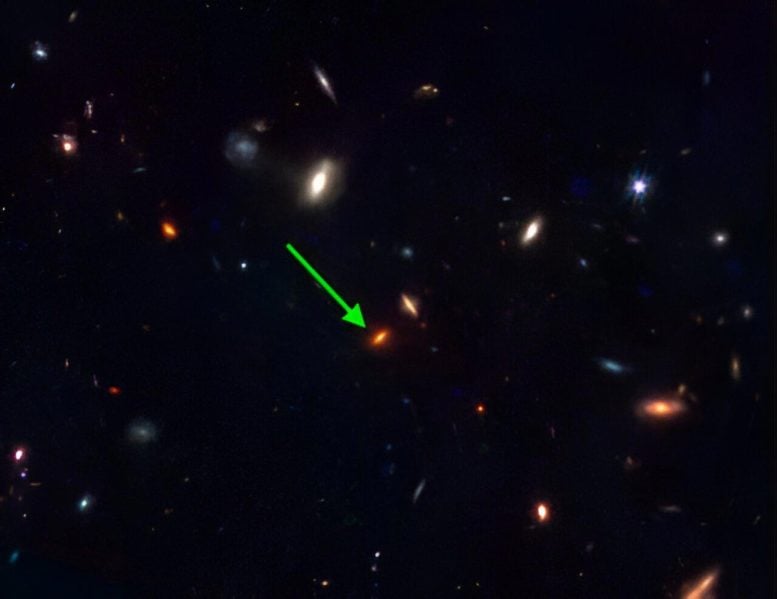

 Reply With Quote
Reply With Quote


